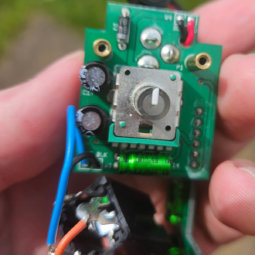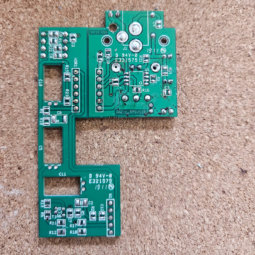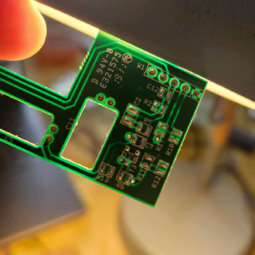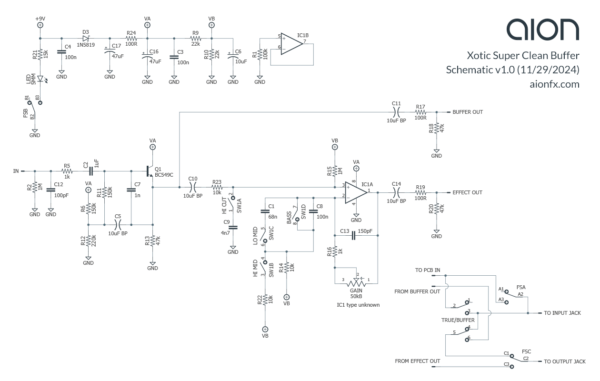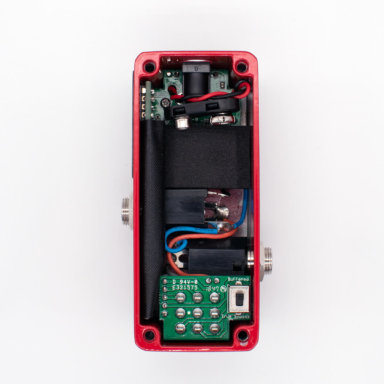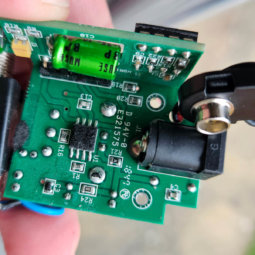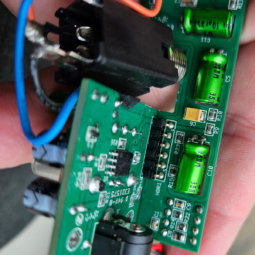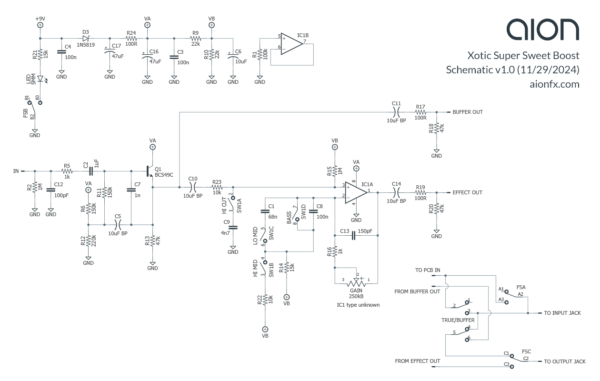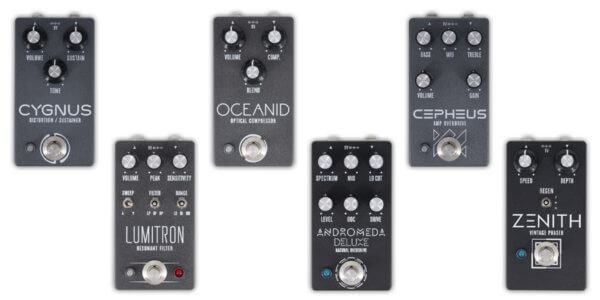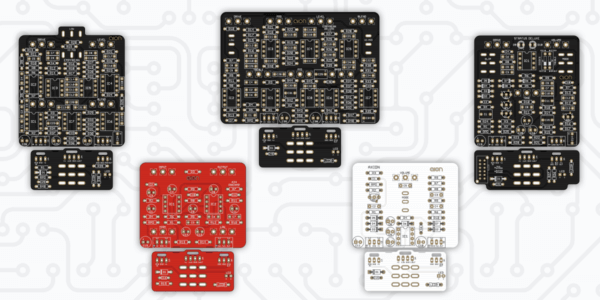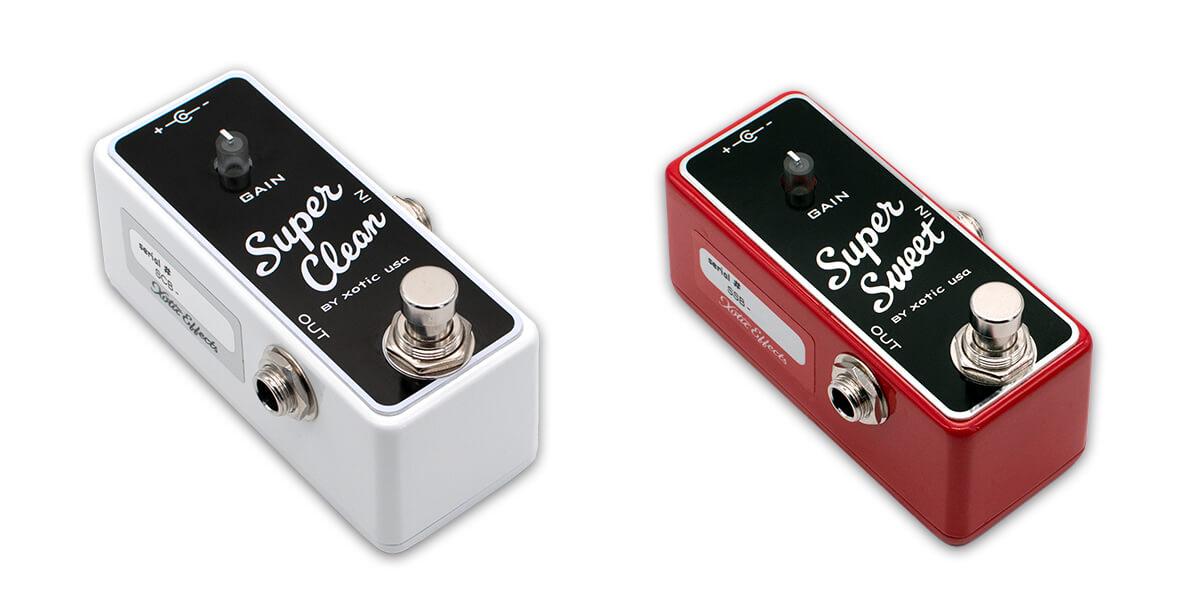
Tracing Journal: Xotic Super Clean Buffer & Super Sweet Boost
The Xotic Super Clean Buffer (SCB) and Super Sweet Boost (SSB) are two mini pedals first released in 2019. They combine a high-quality Cornish buffer with a straightforward boost whose frequency can be shaped with a combination of DIP switches. Here’s a demo of both pedals by Pete Thorn:
Compact, useful tools with the right amount of flexibility. They look very much the same on the outside, and of course we know that the buffer can boost and the boost can buffer—so what are the actual differences?
Xotic posted some graphs on their website showing the frequency response of both pedals and how they compare to each other. The Super Clean is on the top and the Super Sweet is on the bottom:
The actual curves are identical, only the frequency and amplitude scales have been shifted. The Super Clean chart looks reasonable. But if you look closely at the Super Sweet, it starts to unravel. Almost all of the DIP switch differences are above 16kHz. That’s the upper threshold of human hearing, so unless they are marketing the Super Sweet to household pets, it’s just a lazy edit.
So, we picked up one of each and took them apart to see what was actually going on inside.
Super Clean Buffer
Tracing photos
Schematic
Super Sweet Boost
Tracing photos
Schematic
Analysis
As you can see, the two circuits are entirely identical except for two differences: the value of the gain pot (50k in the buffer, 250k in the boost) and the value of the gain-ratio resistor (10k in the buffer, 15k in the boost). This resistor does shift the frequencies of all of the DIP switch settings, so even though the SSB chart is wildly inaccurate, there is a kernel of truth in that the actual shape of the curves should be similar between the two but with the range shifted somewhat.
On a high level, there are two stages to the circuit. The input is a near-identical copy of the Cornish buffer, just with a few values tweaked that don’t really impact anything. After that comes a basic op-amp stage with variable gain boost.
The boost is a fairly textbook application, not much different than what you’d see in a Tube Screamer. (In fact, you could easily add some clipping diodes to the feedback loop to make it into an overdrive.) The major difference is in the DIP switch settings, which affect both the gain ratio and the EQ:
- Hi Cut: a 3.3kHz treble cut that comes before the op-amp stage. (This is another indicator that the graph is wildly inaccurate, because the hi cut is the one setting that should be identical between the two.)
- Hi Mid: a resistor that roughly doubles the gain ratio when engaged (in the buffer; slightly less in the boost), shifting the frequency range of both the Lo Mid and Bass settings
- Lo Mid: a capacitor that parallels the existing frequency-shaping capacitor when engaged, lowering the bass threshold (i.e. extending the range of bass frequencies)
- Bass: a capacitor bypass that overrides both the default frequency-shaping capacitor and the Lo Mid capacitor, effectively making it full-range with no bass cut
IC type
As with nearly all other Xotic pedals, the IC is sanded down so we do not know for sure what type is used. Xotic says these pedals draw 5mA of current, the same as the SL Drive. They have the same number of active components as the SL, so we would arrive at the same conclusion that the IC is probably a JRC4558D. You can read the SL Drive tracing journal for more details on why we think this is the most likely candidate.
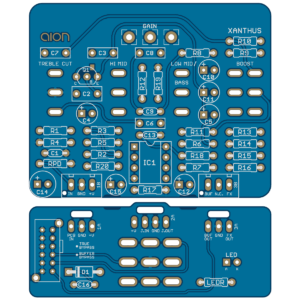 Xanthus Buffer/Boost
Xanthus Buffer/Boost
Releasing today is our adaptation of the Super Clean and Super Sweet, called the Xanthus Buffer/Boost. The true/buffer bypass switch is retained, and we’ve brought all of the DIP switch settings to the front panel as toggle switches. We have also added another switch to go between buffer and boost mode, so both Xotic circuits are available in the same build.
Enclosure size
You may notice that it is significantly larger than Xotic’s original pedals, as with our SL Drive adaptation. As a rule, we don’t do mini pedals. Not only are they much more difficult to build, but they don’t actually save very much pedalboard space. You may know this already, but many people are surprised when they realize that a 125B enclosure with top-mounted jacks is the exact same width as 1590A with side jacks—and that’s only if you use the lowest-profile pancake jacks on the market. The 125B does take up a bit more vertical space, but for most pedalboards it’s the horizontal space that is in much shorter supply, and 1590A pedals don’t offer any real space savings in that regard.
Mini pedals are cool, and Xotic does it impressively. But in our opinion they’re not near as practical as they’re made out to be, and especially in DIY, the downsides outweigh the upsides.



